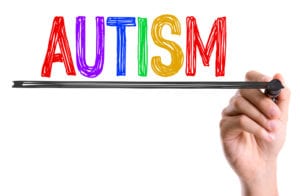Written by Jessica Patella, ND. Of the fifty-seven children with Autism Spectrum Disorder, those who received an intramuscular injection of vitamin B12 every three days for eight weeks showed a significantly greater improvement in B12 methylation than the placebo group.
 According to the CDC the autism rates are now one in every sixty-eight children 1. One challenge that tends to occur in autistic children is difficulty with metabolic processes, specifically methylation and oxidative stress 2,3. Vitamin B12 is a key element in methylation and has been shown to improve oxidative stress 2,4. Recent research has found treatment with vitamin B12 in the methyl form, improved symptoms in autistic children 2.
According to the CDC the autism rates are now one in every sixty-eight children 1. One challenge that tends to occur in autistic children is difficulty with metabolic processes, specifically methylation and oxidative stress 2,3. Vitamin B12 is a key element in methylation and has been shown to improve oxidative stress 2,4. Recent research has found treatment with vitamin B12 in the methyl form, improved symptoms in autistic children 2.
Participants included 57 children diagnosed with Autistic Spectrum Disorder (3-7 years old; 79% male). Children were randomly assigned to 8-weeks of treatment with vitamin B12 (methylcobalamin; 75 microg/kg) or saline placebo, administered via a subcutaneous injection every 3-days. All injections were performed at home by the parents and syringes were covered with an opaque material to hide the red color of vitamin B12 liquid 2.
The Clinical Global Impressions-Improvement (CGI-I) score, which measures Autism Spectrum Disorder symptoms, was the main measurement used. Scores range from 1 to 7, with 5 indicating markedly ill. The follow results were observed after 8-weeks of treatment:
| Baseline | 8 Weeks | |
|---|---|---|
| Methyl B12 group | 5.1 | 2.4 |
| Placebo group | 5.1 | 3.1 |
The score was significantly lower in the methyl B12 group (0.7 greater improvement in methyl B12 group; 95% CI 1.2-0.2; p=0.005) 2.
Parents were also assessed if they felt their child had responded to treatment, if they felt their child had “much improved” or “very much improved” they were considered responders 2. Based on parents’ ratings, 52% of children in the methyl B12 group responded to treatment compared to 26% of children in the placebo group (p=0.086) 2.
Clinical improvement was also observed in oxidative stress markers, with improvements in methionine levels (p=0.05), homocysteine levels (SAH, p=0.007) and the ratio of S-adenosylmethionine (SAMe) to SAH (p=0.007), indicating improvement with methylation at the cellular level and a decrease in oxidative stress in the body 2.
In conclusion, injection with methyl-B12 showed improvements in children with autism 2. These improvements were correlated with improvements in methylation markers in the blood. This was the first randomized, placebo-controlled trial with methyl B12 and autism. Results should be confirmed with a larger group and over a longer period of time 2.
Source: Hendren, Robert L., S. Jill James, Felicia Widjaja, Brittany Lawton, Abram Rosenblatt, and Stephen Bent. “Randomized, placebo-controlled trial of methyl B12 for children with autism.” Journal of child and adolescent psychopharmacology 26, no. 9 (2016): 774-783.
© Mary Ann Liebert, Inc.
Posted February 19, 2018.
References:
- Autism, Investigators DDMNSYP. Prevalence of autism spectrum disorder among children aged 8 years—autism and developmental disabilities monitoring network, 11 sites, United States, 2010. Morbidity and Mortality Weekly Report: Surveillance Summaries. 2014;63(2):1-21.
- Hendren RL, James SJ, Widjaja F, Lawton B, Rosenblatt A, Bent S. Randomized, placebo-controlled trial of methyl B12 for children with autism. Journal of child and adolescent psychopharmacology. 2016;26(9):774-783.
- James SJ, Cutler P, Melnyk S, et al. Metabolic biomarkers of increased oxidative stress and impaired methylation capacity in children with autism. The American journal of clinical nutrition. 2004;80(6):1611-1617.
- Bottiglieri T. Folate, vitamin B12, and S-adenosylmethionine. Psychiatric Clinics. 2013;36(1):1-13.

